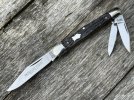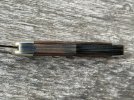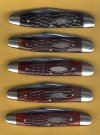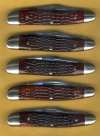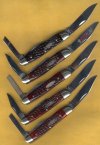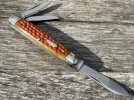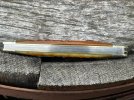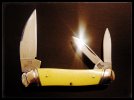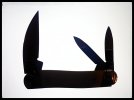waynorth
Knifemaker / Craftsman / Service Provider
- Joined
- Nov 19, 2005
- Messages
- 33,162
Back in 2000, and years before, Case used their 6347 pattern to make a whittler. A nice serpentine pattern, easy to both grip and
pocket, it makes a great whittler! This one has ubiquitous Case Stainless blades, in a well-fitted configuration. It's a nice knife! Because parts are tumbled, you don't get that custom "one piece of metal" look on the backspring, but this knife is nicely finished in other ways.
Case MM (for millenium) 5347WH, a great knife from all angles!!
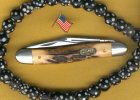
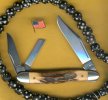
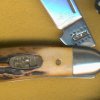
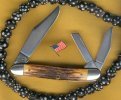
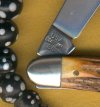

pocket, it makes a great whittler! This one has ubiquitous Case Stainless blades, in a well-fitted configuration. It's a nice knife! Because parts are tumbled, you don't get that custom "one piece of metal" look on the backspring, but this knife is nicely finished in other ways.
Case MM (for millenium) 5347WH, a great knife from all angles!!






Last edited:

